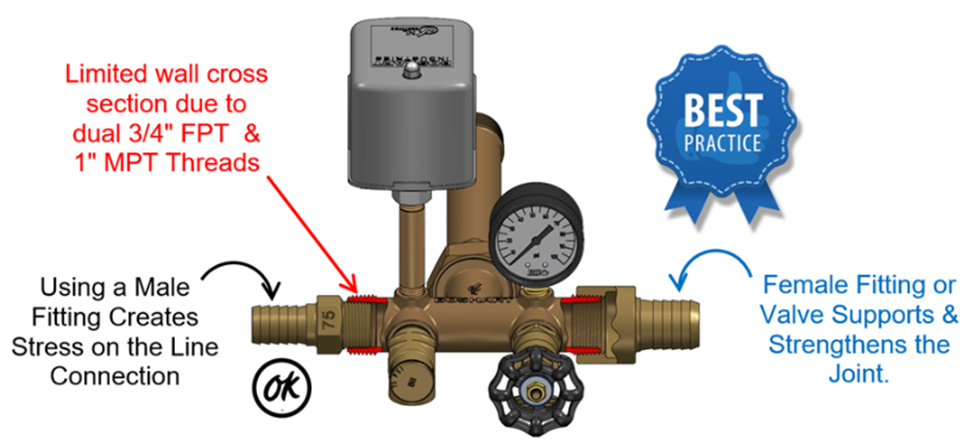What is the best practice for installing tank tees?
What is the best practice for installing tank tees?

The best practice is to plumb using the external line connections. The tank tees are manufactured with dual external MPT threads and internal FPT threads on the line connections. This limits the possible wall thickness. The wall thickness is limited more on 1” tank tees which have 1” MPT external threads and ¾” FPT internal thread. The issue is not as pronounced on the 1-1/4” tank tees which have 1-1/4” MPT external threads and a 1” FPT internal thread. Connecting lines to either the internal or external connections is suitable, however when using the internal connections to use smaller size, less expensive fittings, or valves for cost savings, one must use proper installation techniques, and take great care to not over tighten the fittings in the internal connections.

The use of the external threads also eliminates issues related to flow restriction or friction loss. This is generally more important on the pump line connection.
Additional Resources:
https://support.boshart.com/what-is-the-maximum-working-pressure-of-tank-tees
https://support.boshart.com/what-is-the-function-of-each-well-water-pressure-system-component
https://support.boshart.com/wellmate-wm-series-quick-connect-tank-tee-installation-instructions
